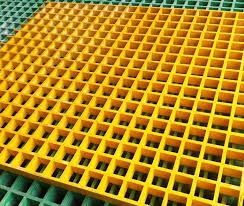loading...
- No. 9, Xingyuan South Street, Dongwaihuan Road, Zaoqiang County, Hengshui, Hebei, China
- admin@zjcomposites.com
- +86 15097380338
- Welcome to visit our website!
Cost of Fiberglass Water Tanks for Various Applications and Needs
Understanding the Pricing of Fiberglass Water Tanks
Fiberglass water tanks are increasingly becoming popular in both residential and industrial applications due to their durability, corrosion resistance, and lightweight properties. However, when considering the investment in these tanks, it is essential to understand the factors that influence their pricing.
What are Fiberglass Water Tanks?
Fiberglass water tanks are constructed using a composite material made of fine glass fibers and resin, providing several advantages over traditional materials like steel or concrete. They are non-corrosive, can handle extreme temperatures, and are less prone to leaking, making them an excellent choice for storing potable water, chemicals, and wastewater.
Factors Influencing Pricing
1. Capacity and Size The price of a fiberglass water tank largely depends on its capacity. Smaller tanks designed for residential use will generally cost less than larger industrial tanks that can hold thousands of gallons. It's crucial to assess your needs accurately to avoid overpaying for unnecessary capacity.
2. Customization and Features Many manufacturers offer customized options to better meet the specific requirements of their clients. Features such as additional access ports, insulation, or integration with other systems can increase the overall cost. Buyers should weigh their real needs against their budget when considering these customizations.
3. Manufacturing Standards The quality of materials and manufacturing processes also greatly influences price. Tanks made following strict regulatory standards, such as NSF certification for potable water storage, may come at a premium but offer greater assurance regarding safety and longevity.
fiberglass water tank price

4. Brand Reputation and Warranty Well-known brands that offer robust warranties on their products often charge higher prices. Investing in a reputable brand may come with higher initial costs but can provide peace of mind in terms of performance and durability over time.
5. Market Conditions Like any product, market conditions, including the cost of raw materials, transportation, and demand, can affect pricing. Economic fluctuations may impact the cost of fiberglass and other components, leading to price adjustments.
6. Installation and Maintenance Costs While the initial cost of the tank is a significant factor, potential buyers should also consider installation and maintenance expenses. Some tanks may require professional installation, which can add to the overall cost. Additionally, users should budget for ongoing maintenance to ensure the longevity of their tanks.
Average Price Range
As of 2023, fiberglass water tanks typically range from $500 to $5,000 or more, depending on the factors outlined. Smaller residential tanks might start around the lower end of the spectrum, while large commercial tanks with advanced features can escalate quickly in price. When budgeting, it is advisable to obtain multiple quotes and consider total costs, including installation and any necessary accessories.
Conclusion
Investing in a fiberglass water tank can yield long-term benefits due to its durability and resistance to various environmental factors. By understanding the elements that impact pricing, consumers can make informed decisions that align with their needs and budget. While the initial expense might seem considerable, the overall value and performance of fiberglass water tanks can justify the investment, especially for those seeking a reliable and low-maintenance solution for water storage.
-
GRP Structures: The Future of Lightweight, High-Performance EngineeringNewsJun.20,2025
-
FRP Water Tank: High-Performance Storage for Corrosive and Clean Water SystemsNewsJun.20,2025
-
FRP Square Tube: The New Industry Standard for Chemical and Structural ApplicationsNewsJun.20,2025
-
FRP Pultruded Profiles: The Ultimate Choice for Lightweight Structural StrengthNewsJun.20,2025
-
FRP Handrails: The Safer, Smarter, and Stronger Choice for Modern InfrastructureNewsJun.20,2025
-
FRP Grating: The Smart Solution for Durable, Lightweight Industrial FlooringNewsJun.20,2025
-
Why Choose a Galvanized Water Tank for Your Storage NeedsNewsMay.21,2025
